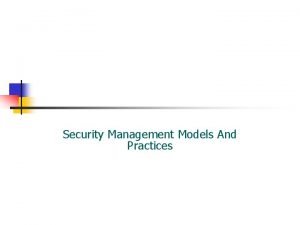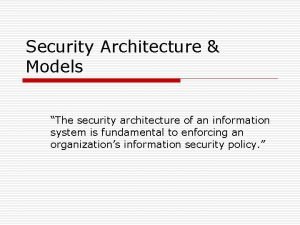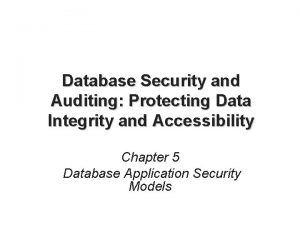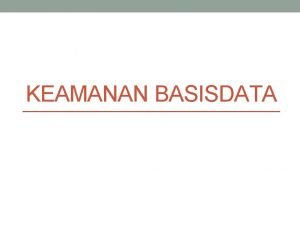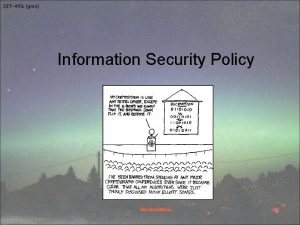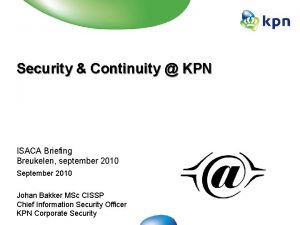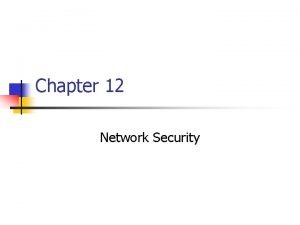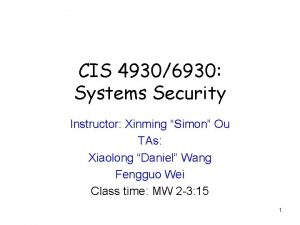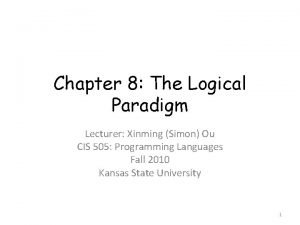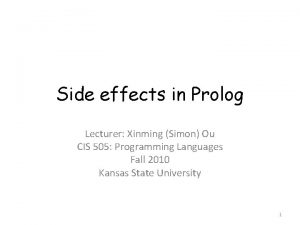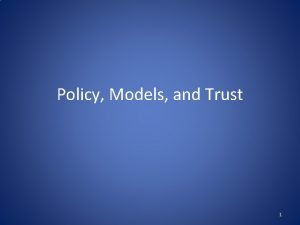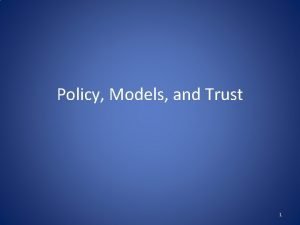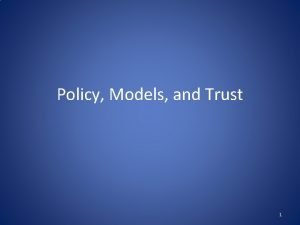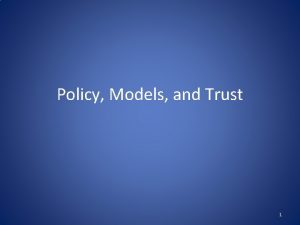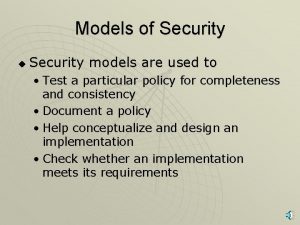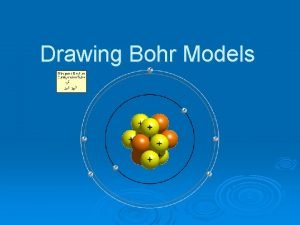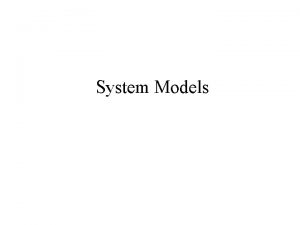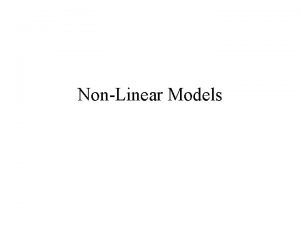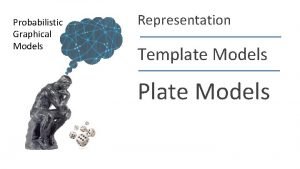Security Models Xinming Ou Security Policy vs Security




















- Slides: 20

Security Models Xinming Ou

Security Policy vs. Security Goals • In a mandatory access control system, the system defines security policy to achieve security goals – Policies cannot be bypassed or changed by users (processes) – How to ensure the policies are defined correctly, i. e. , the security goals are actually achieved

Information Flow • When a subject s reads an object o, information flows from o to s. • When a subject s writes to an object o, information flows from s to o.

Information Flow Graph • Information flow graph for a protection state Directed graph G = (V, E) where: (1) the set of vertices V includes all subjects and objects in the protection state, and (2) the set of directed edges E consists of each read and write information flow in the protection state.

Example Source: Operating system security, Jaeger’ 08, Morgan & Claypool

Use Information Flow Graph to Reason about Security Goals • Secrecy – Can data be leaked from one subject/object to another subject/object? • Integrity – Can subject/object of low integrity influence subject/object with high integrity?

Secrecy Model • Goal: prevent unauthorized disclosure of information • Secrecy model ensures that policies defined according to the model will not result in unauthorized disclosure – Only applicable to MAC, not DAC.

Lattice • A lattice is formed by a partial order relations

Example Some partial order relations: a …… The join operator: least upper bound The dominance relation: b c d e

Secrecy Lattice • Nodes are called "security class" -- labels assigned to objects and subjects • Partial order represents the “can flow” relation Top secret Secret Confidential Unclassified

Bell La. Padula Model • Security labels arranged in linear ordering – Top Secret: highest – Secret – Confidential – Unclassified: lowest • Labels assigned to subjects: security clearance (SC) • Labels assigned to objects: security classification (SC)

BLP Model (MLS) • Simple-Security Property (no read up): • *-Security Property (no write down):

Labeling State • Assignment of labels to subjects and objects happens at the creation time – The label must dominate the label of the creating process • Labels cannot be changed once assigned

Extension of the MLS model • Introduce categories to further differentiate the security class – Security class consists of the sensitivity level (top secret, confidential, unclassified) and zero or more categories. • • Secret: MIL Top secret: ST Secret: MIL+ST Top secret: NONE

Extension of the MLS model • All categories form a lattice as well MIL+ST ST MIL NONE

Extension of the MLS model • Security class has the form of l: c, where l is the sensitivity level and c is the category • Example: Secret: None Secret: ST Secret: MIL Topsecret: MIL Secret: MIL+ST Topsecret: MIL


Integrity Model • Goal: Ensure that processes of high integrity do not depend on/are not influenced by those with low integrity • Integrity goal can be mapped to information flows: – Objects with low integrity cannot flow into subjects with high integrity

Biba Integrity Model • Simple-Integrity Property (read up): • *-Security Property (write down):

Integrity Classification • E. g. , System Middleware Application User
 Xinming ou
Xinming ou Integrity in e commerce
Integrity in e commerce Difference between model and semi modals
Difference between model and semi modals Security security security
Security security security Security management models
Security management models Security architecture and design models
Security architecture and design models Multi level security example
Multi level security example Database security models
Database security models Where does biba fit into iso 27000
Where does biba fit into iso 27000 Kebijakan keamanan sistem informasi
Kebijakan keamanan sistem informasi Database security policy
Database security policy Database security policy
Database security policy Cjis security policy
Cjis security policy Cjis level 4 certification
Cjis level 4 certification Xkcd specifications
Xkcd specifications Isaca business continuity
Isaca business continuity Pcnse recertification
Pcnse recertification Security policy cycle
Security policy cycle What is the osi security architecture
What is the osi security architecture Guide to network security
Guide to network security Wireless security in cryptography
Wireless security in cryptography




